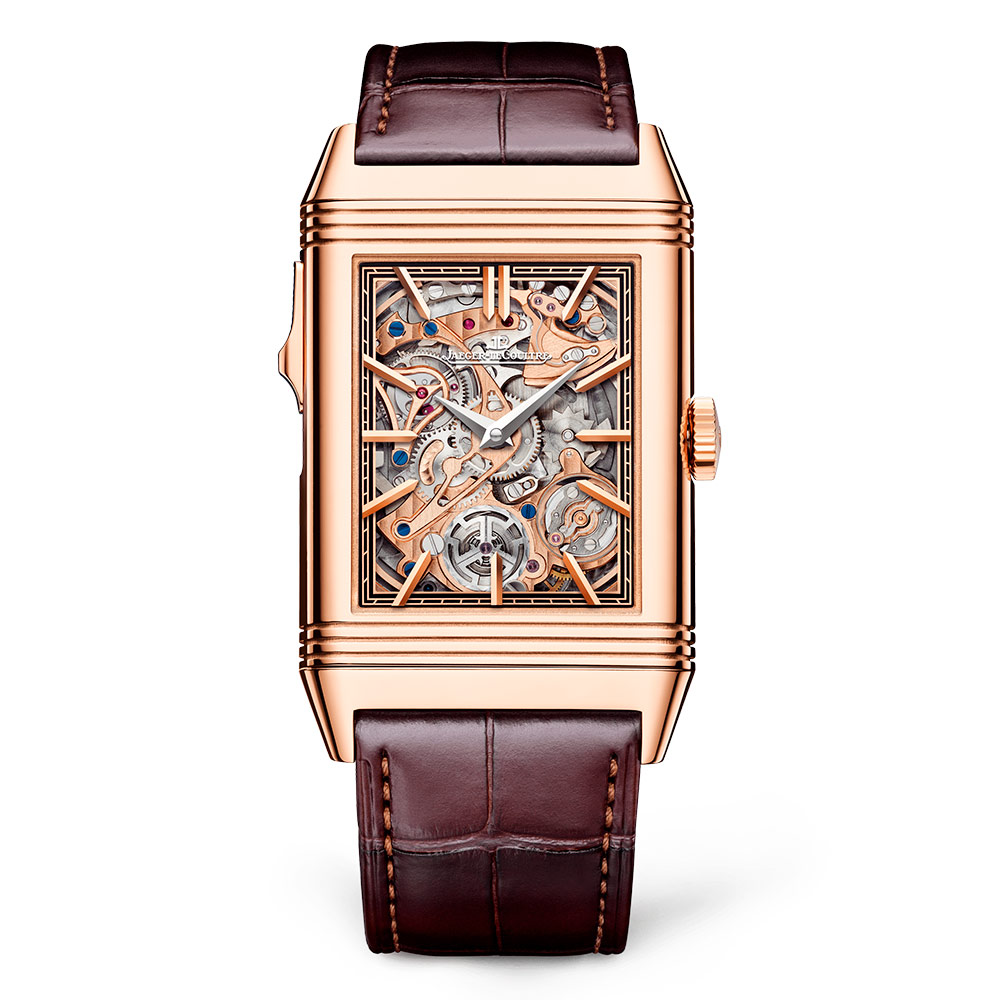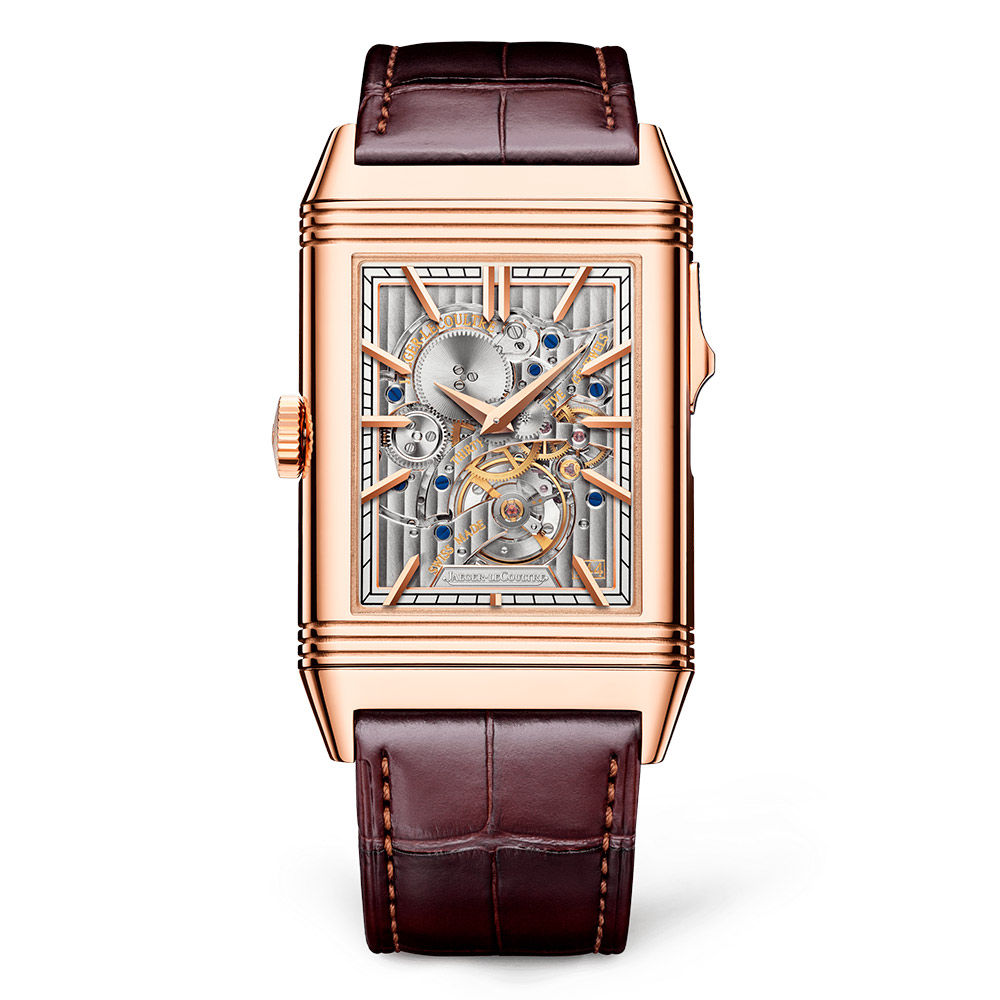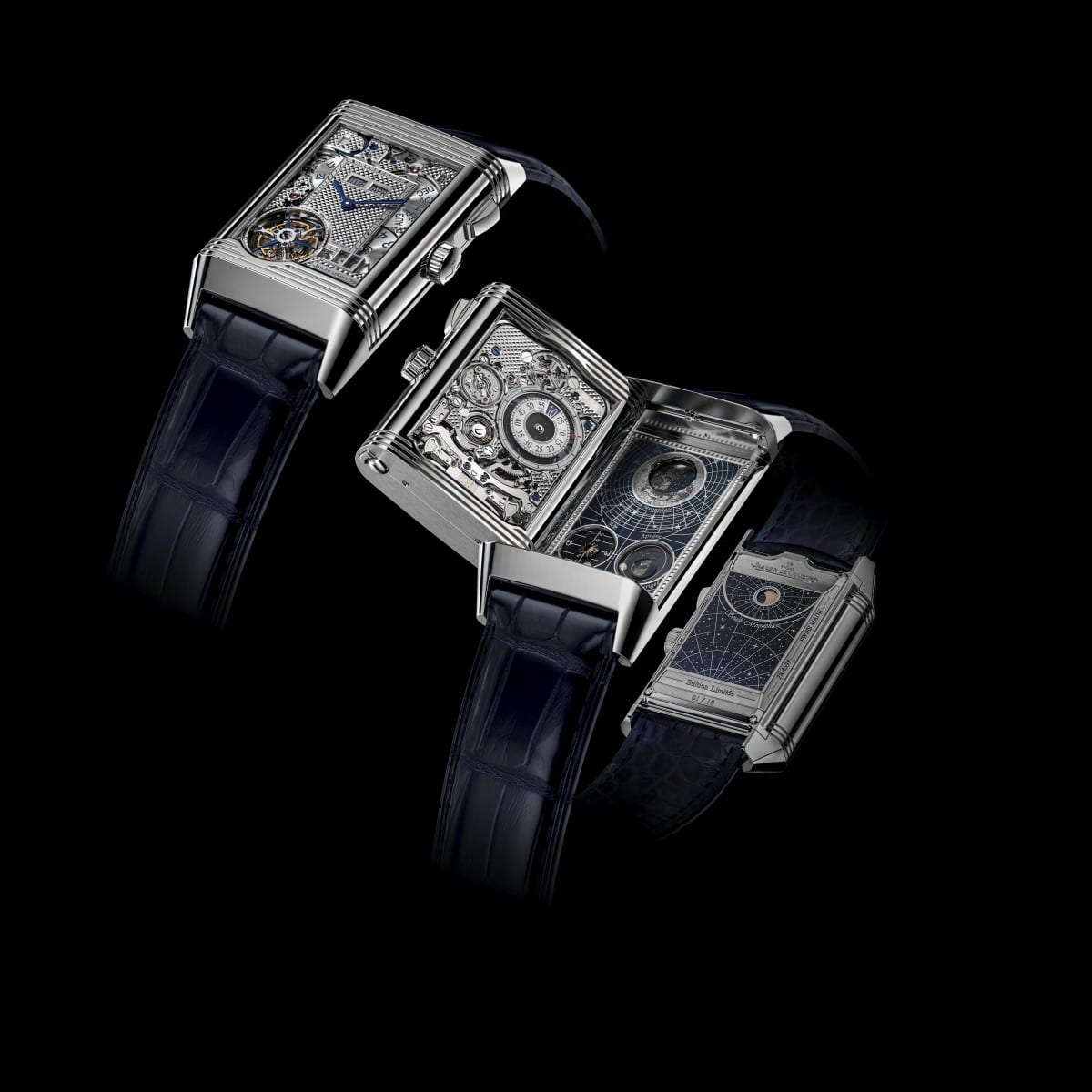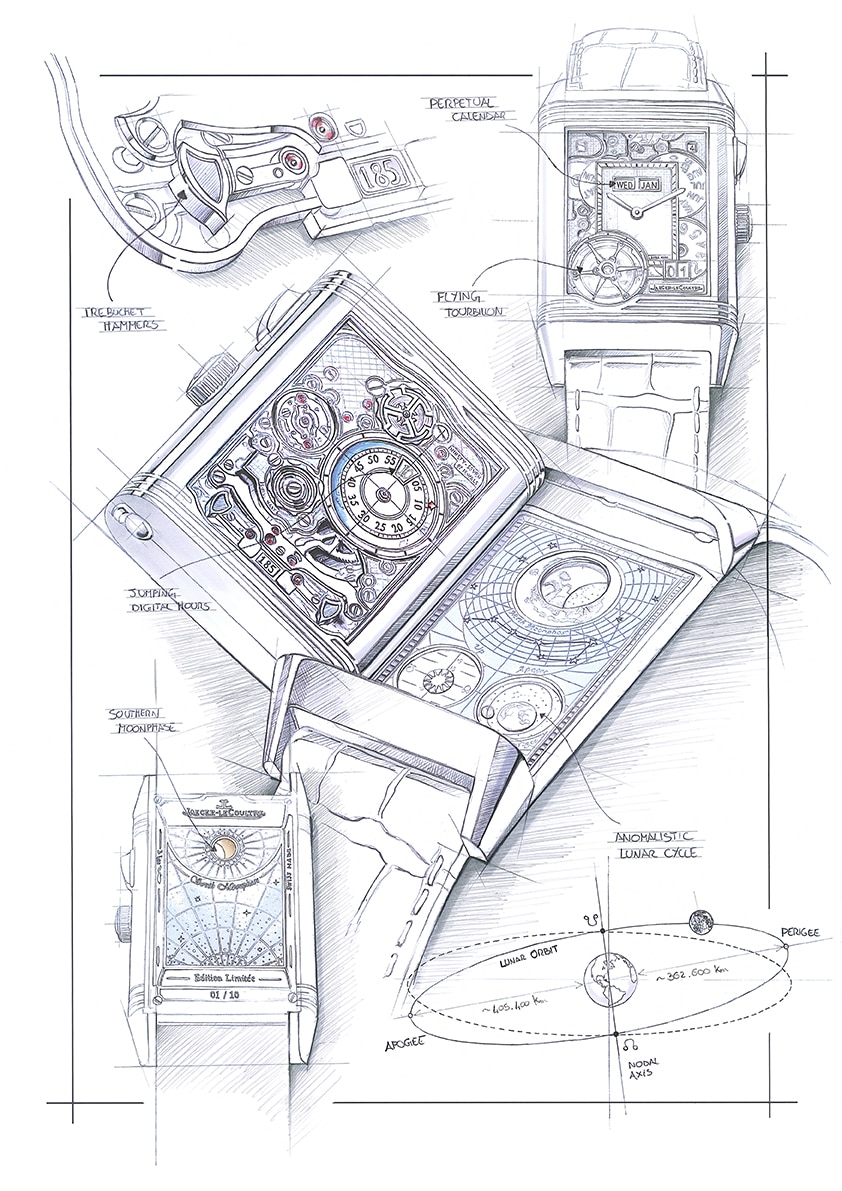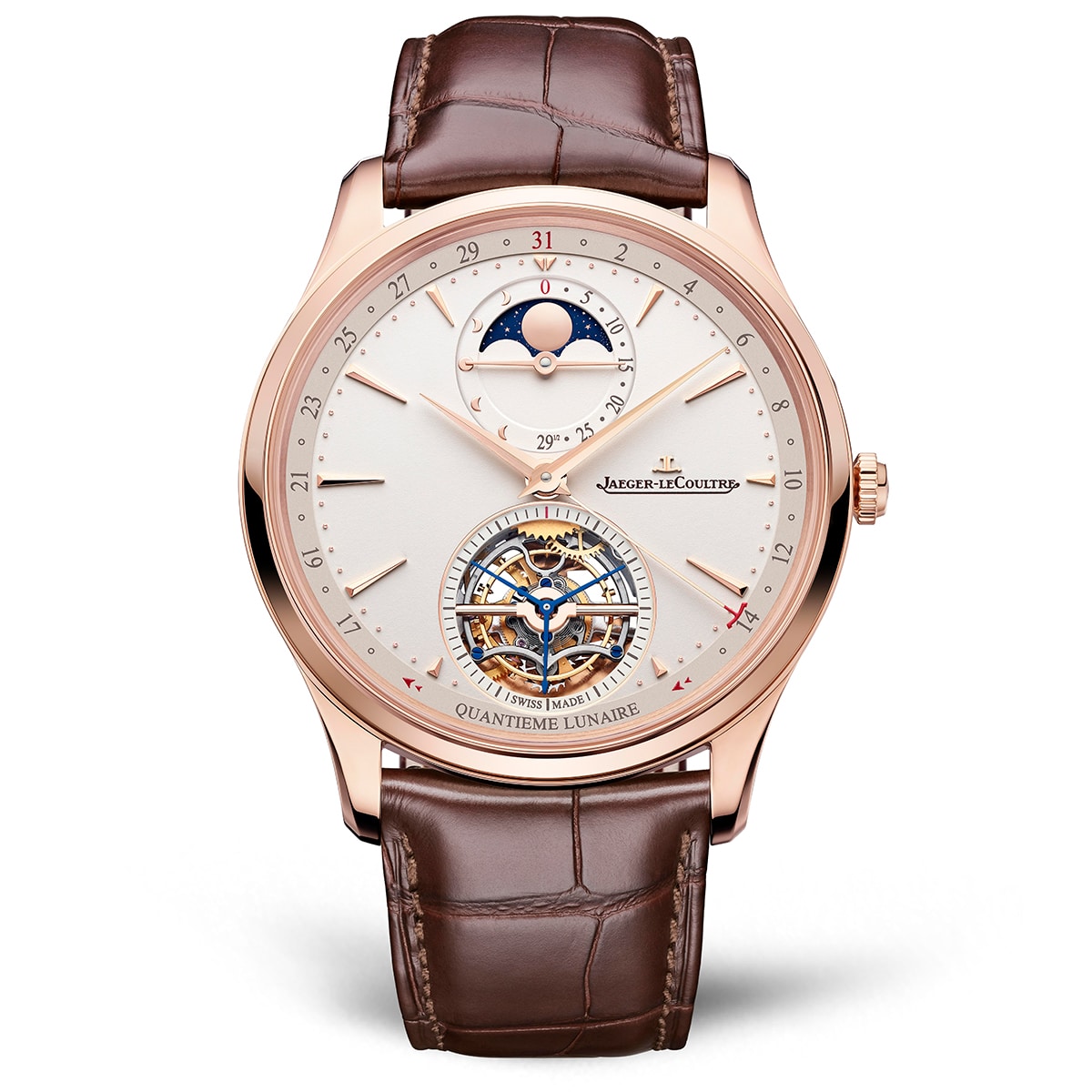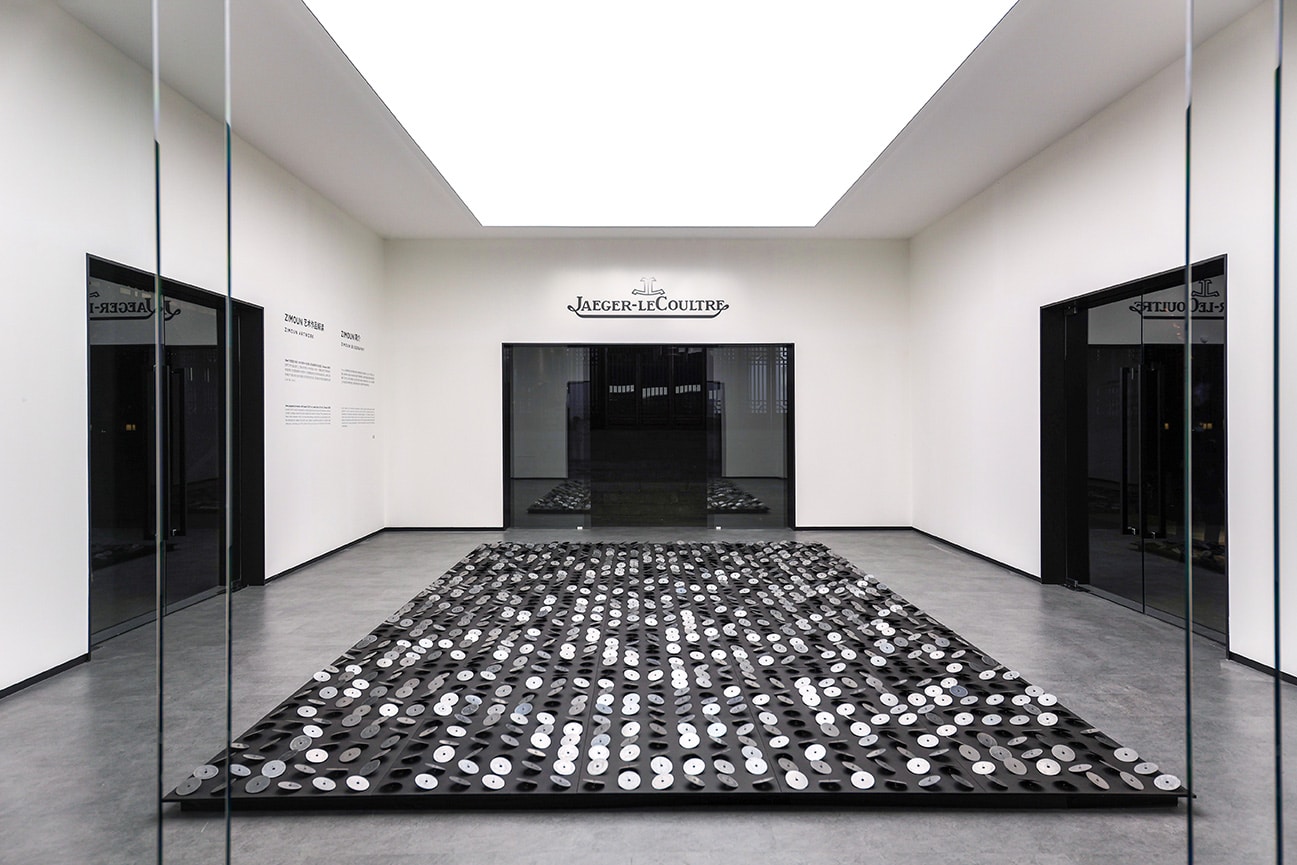Jaeger-Lecoultre presenta el Atmos Hybris Mechanica Calibre 590
EL PERPETUO MOVIMIENTO DEL SISTEMA SOLAR CAPTADO EN UNA SUBLIME OBJET D’ART
En consonancia con la eterna búsqueda de precisión de Jaeger-LeCoultre, los ingenieros y relojeros de la Manufactura han creado una nueva complicación que reproduce los ciclos reales de la Tierra, el Sol y la Luna más fielmente que nunca, y la han desarrollado específicamente para el Atmos Hybris Mechanica Calibre 590. El extraordinario mecanismo aporta una dimensión completamente nueva a Atmos, el reloj perpetuo único que funciona en el aire, que muestra, en tres dimensiones y en tiempo real, las posiciones y movimientos relativos de la Tierra, la Luna y el Sol.
Apodado Atmos Tellurium, este es el reloj Atmos más complejo jamás creado, superando los límites de la precisión y el diseño, y la complejidad y la belleza arquitectónica de su movimiento inspiraron naturalmente a los artesanos del taller Métiers Rares® de Jaeger-LeCoultre. Dedicando una amplia gama de sus habilidades artesanales a su decoración, desde la pintura en miniatura y el grabado con láser hasta el trabajo de laca y la incrustación de meteoritos, han elevado el Atmos Hybris Mechanica Calibre 590 para convertirlo en una obra de arte sublime, así como en un cronometraje excepcional. dispositivo.
· Empujando los límites de la precisión y el diseño, el Atmos Hybris Mechanica Calibre 590 es el reloj Atmos más complejo jamás creado y requiere más de cuatro años de trabajo de investigación y desarrollo.
· El nuevo Calibre 590 incorpora una complicación que reproduce los ciclos reales de la Tierra, el Sol y la Luna
· Los artesanos del taller Métiers Rares® de Jaeger-LeCoultre dedicaron una amplia gama de habilidades artesanales a su decoración, transformando un extraordinario dispositivo de cronometraje en una obra de arte sublime

Medir el tiempo a medida que se mueven los planetas
En un principio, gracias al movimiento de las estrellas y los planetas, la humanidad se dio cuenta del paso del tiempo y comenzó a definirlo y medirlo. Los días, con períodos de luz y oscuridad, estaban definidos por una rotación completa de la Tierra sobre su eje; Los años se definían por el tiempo que tardaba el Sol en volver a la misma posición en el cielo, completando un ciclo completo de estaciones.
Durante milenios, los científicos inventaron instrumentos para reproducir estos ciclos y mejorar su comprensión de los fenómenos celestes. Los relojeros comenzaron a medir el tiempo utilizando los valores de los diversos ciclos astronómicos, aunque las unidades del tiempo civil estándar son solo aproximadas, basadas en los valores promedio de los ciclos solar, lunar y sideral. En 1543, Copérnico revolucionó el pensamiento científico con la publicación de su modelo heliocéntrico del sistema solar (primera hipótesis del astrónomo griego antiguo Aristarco de Samos, el modelo había sido descartado durante más de 1500 años a favor de un modelo centrado en la Tierra). El modelo heliocéntrico coloca al Sol, en lugar de a la Tierra, en el centro de nuestro sistema solar y su publicación desencadenó la invención del telurio (también escrito como telurio), un móvil mecánico tridimensional que ilustra las posiciones relativas y los movimientos de la Tierra y la Luna en relación con el Sol. Desde el siglo XVIII en adelante, los elaborados relojes fueron a veces coronados por estos fascinantes mecanismos. El apodo del Calibre 590, ‘Telurio’, es un tributo a esos magníficos relojes.
Inventado en 1928, el Atmos no necesita intervención humana para dar cuerda a su movimiento; una variación de temperatura de tan solo un grado centígrado proporciona energía suficiente para darle cuerda durante 48 horas, lo que le permite funcionar perpetuamente si se mantiene en las condiciones normales del día a día. Debido a que este notable sistema produce solo una pequeña cantidad de energía, unas 40 veces menos energía que la que normalmente ofrece un movimiento de reloj tradicional de 4 Hz, el movimiento Atmos ha sido diseñado para consumir la menor cantidad de energía posible, y el equilibrio tarda un minuto en realizar un movimiento completo. oscilación.
Con el tiempo, los relojeros de Jaeger-LeCoultre han superado el desafío de agregar funciones al mecanismo sin aumentar sustancialmente el consumo de energía. Al hacerlo, han descubierto que las complicaciones que mejor se adaptan a Atmos son las que se basan en ciclos más largos, como las estaciones, los meses y las fases de la luna.

Una nueva complicación y una pantalla cautivadora
El nuevo Calibre 590 se concibió, diseñó y fabricó íntegramente en la Manufactura Jaeger-LeCoultre y se ensambló en el atelier de Atmos, un taller dedicado exclusivamente a Atmos. Compuesto por 443 componentes, con la complicación de telurio completamente integrada en el movimiento, requirió más de cuatro años de investigación y desarrollo; su complejidad técnica y sofisticación, naturalmente, merecen un lugar en la colección Hybris Mechanica de Jaeger-LeCoultre. Además de reproducir con precisión la rotación de la Tierra sobre su propio eje, y las órbitas de la Luna alrededor de la Tierra y de la Tierra alrededor del Sol, el nuevo calibre indica los meses y estaciones correspondientes con un calendario zodiacal.
La esfera del reloj está definida por un anillo periférico formado por dos capas. La capa superior, fija en su lugar, está marcada con una pista de horas y minutos y los nombres de las estaciones; éste oculta un anillo móvil marcado con los meses, que aparecen en una ventanilla a las 6 h. Dentro de este marco hay un disco de cristal de zafiro azul translúcido, grabado con láser con los signos del zodiaco. En el centro de la esfera, el sol está representado por un estallido de rayos de metal dorado pulido.
Cerca del anillo periférico, equilibrado por un contrapeso en forma de cuña, un círculo de meteorito enmarca un disco de zafiro transparente en el que se encuentran una Tierra y una Luna esféricas. La Tierra gira sobre su eje en 24 horas, la duración de un día civil, proporcionando una indicación de día y noche a medida que gira. Al mismo tiempo, la Luna orbita la Tierra en un mes sinódico, girando sobre su propio eje para mostrar sus fases. Definido por un ciclo completo de fases lunares, un mes sinódico medio tiene una duración de 29 días, 12 horas, 44 minutos y 2 segundos. Esta duración media (o promedio) permite la ligera variación causada por la forma elíptica de la órbita de la Luna. El mecanismo del Atmos está tan cerca de este medio que crea solo un día de error en 5.770 años.
Todo este disco de la Tierra y la Luna orbita alrededor del Sol central, haciendo una rotación completa en un año solar (o “tropical”), indicando las estaciones a medida que gira. Los relojeros de Jaeger-LeCoultre han logrado establecer un ciclo de 365,2466 días. Esto está tan cerca del valor de referencia de 365,2425 días que se encuentra en el calendario gregoriano que varía solo un día en 390 años, lo que significa que no necesitará ajustarse hasta el año 2412 (el único ajuste es el cambio estacional).

Totalmente visible desde todos los ángulos, todo el mecanismo parece flotar en el espacio dentro de su gabinete cilíndrico de vidrio. De hecho, está sostenido y unido a la base por una campana de cristal prácticamente invisible, que también encierra el volante anular. Al igual que el cuerpo principal del movimiento, la balanza también parece flotar mientras realiza su baile lento y fascinante. explica Lionel Favre, director de diseño de Jaeger-LeCoultre.
Naturalmente, este extraordinario mecanismo ha inspirado a los artesanos del taller Métiers Rares® de Jaeger-LeCoultre a dedicar una amplia gama de sus habilidades artesanales a su decoración. La pintura en miniatura agrega detalle y profundidad a la Tierra esférica; el grabado láser evoca la superficie de la Luna; la laca aporta un rico brillo al anillo de la esfera principal; y meteorito – material que literalmente ha caído del espacio – está incrustado en el anillo Tierra-Luna; y la vitrina ha sido pintada a mano con una delicada representación de las constelaciones.
El reloj Atmos más complejo jamás creado, el nuevo Atmos Hybris Mechanica Calibre 590 supera los límites de la precisión y el diseño un paso más allá con un mecanismo perpetuo complementado con un telurio que perpetúa el tiempo hasta casi el infinito. Muestra este notable logro en forma de una verdadera obra de arte.
DETALLES TÉCNICOS
ATMOS HYBRIS MECHANICA CALIBRE 590
Dimensiones : 215 mm de diámetro x 253 mm de altura
Calibre : Perpetuo Jaeger-LeCoultre Calibre 590
Frecuencia : balanza anular con oscilación de 60 segundos
Funciones : horas, minutos, día y noche, mes, fases lunares, calendario zodiacal
Gabinete : vidrio cilíndrico pintado a mano con las constelaciones
Acabados decorativos : incrustaciones de meteorito; grabado; pintura en miniatura; barniz
Referencia : Q5765300 – Edición limitada de 10 piezas






